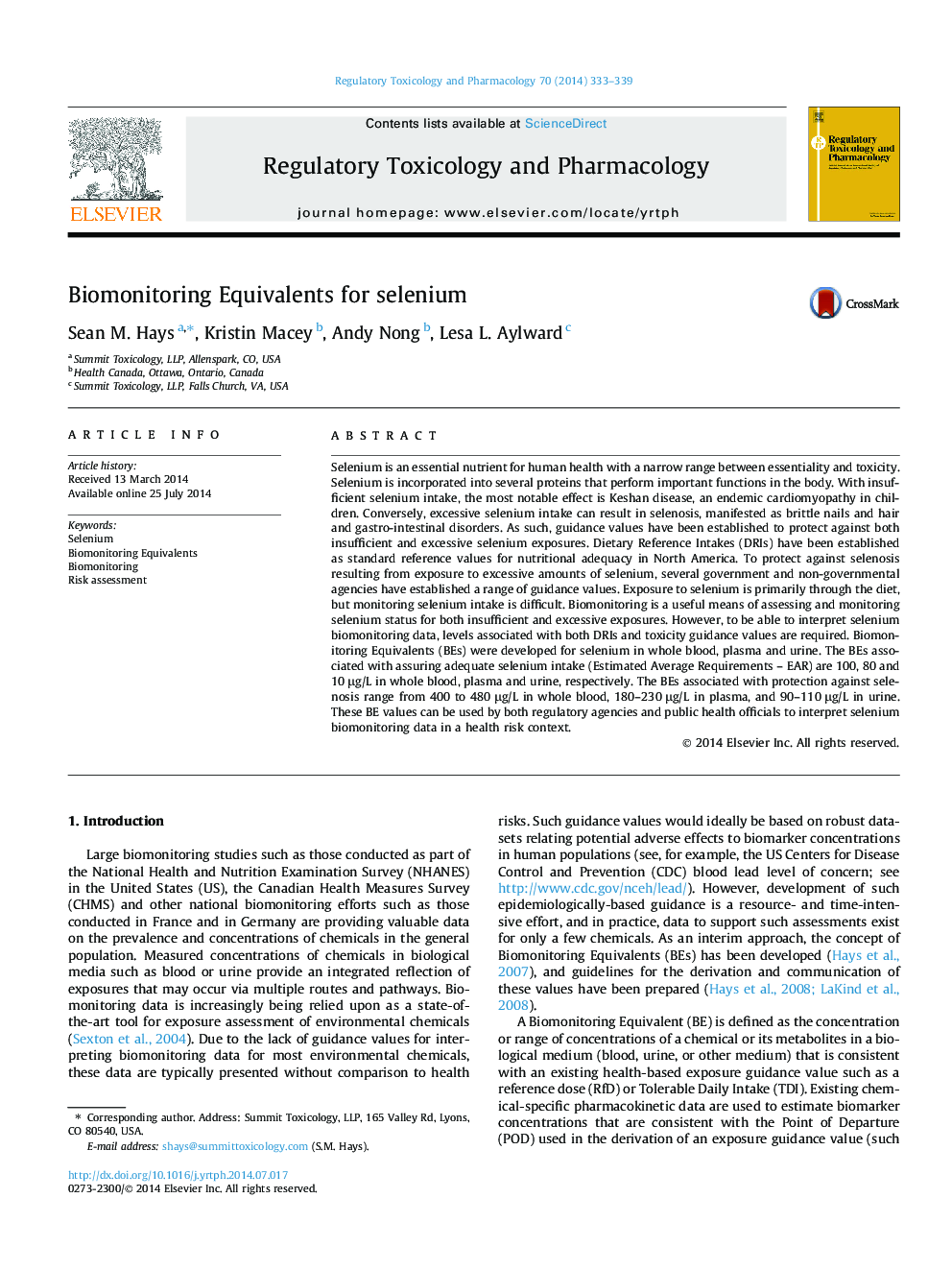| کد مقاله | کد نشریه | سال انتشار | مقاله انگلیسی | نسخه تمام متن |
|---|---|---|---|---|
| 5856909 | 1131985 | 2014 | 7 صفحه PDF | دانلود رایگان |
عنوان انگلیسی مقاله ISI
Biomonitoring Equivalents for selenium
ترجمه فارسی عنوان
بیومونیزاسیون معادل آن برای سلنیوم
دانلود مقاله + سفارش ترجمه
دانلود مقاله ISI انگلیسی
رایگان برای ایرانیان
کلمات کلیدی
سلنیوم، معادل بیومونیتوری، بیومونیتوری، ارزیابی ریسک،
موضوعات مرتبط
علوم زیستی و بیوفناوری
علوم محیط زیست
بهداشت، سم شناسی و جهش زایی
چکیده انگلیسی
Selenium is an essential nutrient for human health with a narrow range between essentiality and toxicity. Selenium is incorporated into several proteins that perform important functions in the body. With insufficient selenium intake, the most notable effect is Keshan disease, an endemic cardiomyopathy in children. Conversely, excessive selenium intake can result in selenosis, manifested as brittle nails and hair and gastro-intestinal disorders. As such, guidance values have been established to protect against both insufficient and excessive selenium exposures. Dietary Reference Intakes (DRIs) have been established as standard reference values for nutritional adequacy in North America. To protect against selenosis resulting from exposure to excessive amounts of selenium, several government and non-governmental agencies have established a range of guidance values. Exposure to selenium is primarily through the diet, but monitoring selenium intake is difficult. Biomonitoring is a useful means of assessing and monitoring selenium status for both insufficient and excessive exposures. However, to be able to interpret selenium biomonitoring data, levels associated with both DRIs and toxicity guidance values are required. Biomonitoring Equivalents (BEs) were developed for selenium in whole blood, plasma and urine. The BEs associated with assuring adequate selenium intake (Estimated Average Requirements - EAR) are 100, 80 and 10 μg/L in whole blood, plasma and urine, respectively. The BEs associated with protection against selenosis range from 400 to 480 μg/L in whole blood, 180-230 μg/L in plasma, and 90-110 μg/L in urine. These BE values can be used by both regulatory agencies and public health officials to interpret selenium biomonitoring data in a health risk context.
ناشر
Database: Elsevier - ScienceDirect (ساینس دایرکت)
Journal: Regulatory Toxicology and Pharmacology - Volume 70, Issue 1, October 2014, Pages 333-339
Journal: Regulatory Toxicology and Pharmacology - Volume 70, Issue 1, October 2014, Pages 333-339
نویسندگان
Sean M. Hays, Kristin Macey, Andy Nong, Lesa L. Aylward,
